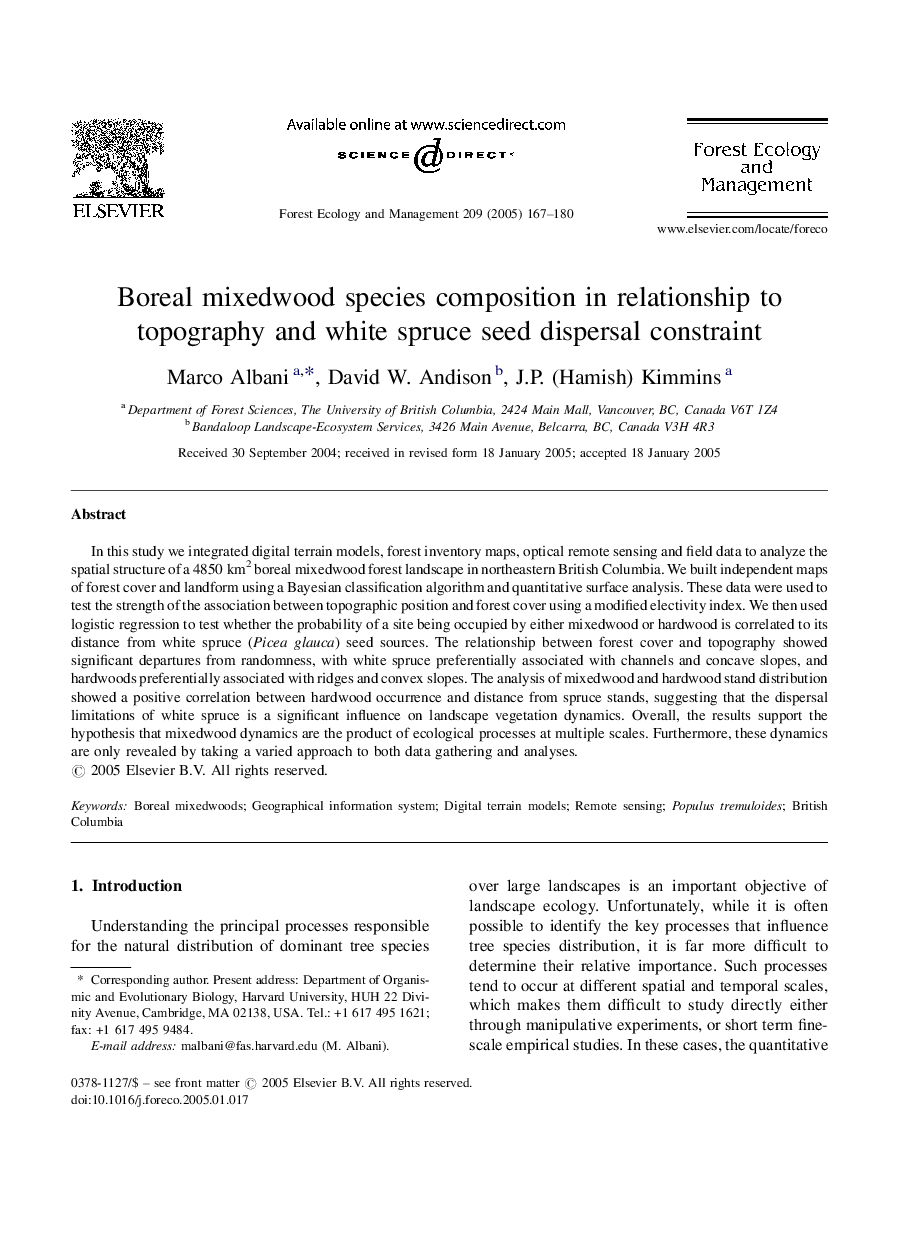| Article ID | Journal | Published Year | Pages | File Type |
|---|---|---|---|---|
| 10250874 | Forest Ecology and Management | 2005 | 14 Pages |
Abstract
In this study we integrated digital terrain models, forest inventory maps, optical remote sensing and field data to analyze the spatial structure of a 4850Â km2 boreal mixedwood forest landscape in northeastern British Columbia. We built independent maps of forest cover and landform using a Bayesian classification algorithm and quantitative surface analysis. These data were used to test the strength of the association between topographic position and forest cover using a modified electivity index. We then used logistic regression to test whether the probability of a site being occupied by either mixedwood or hardwood is correlated to its distance from white spruce (Picea glauca) seed sources. The relationship between forest cover and topography showed significant departures from randomness, with white spruce preferentially associated with channels and concave slopes, and hardwoods preferentially associated with ridges and convex slopes. The analysis of mixedwood and hardwood stand distribution showed a positive correlation between hardwood occurrence and distance from spruce stands, suggesting that the dispersal limitations of white spruce is a significant influence on landscape vegetation dynamics. Overall, the results support the hypothesis that mixedwood dynamics are the product of ecological processes at multiple scales. Furthermore, these dynamics are only revealed by taking a varied approach to both data gathering and analyses.
Keywords
Related Topics
Life Sciences
Agricultural and Biological Sciences
Ecology, Evolution, Behavior and Systematics
Authors
Marco Albani, David W. Andison, J.P. (Hamish) Kimmins,
